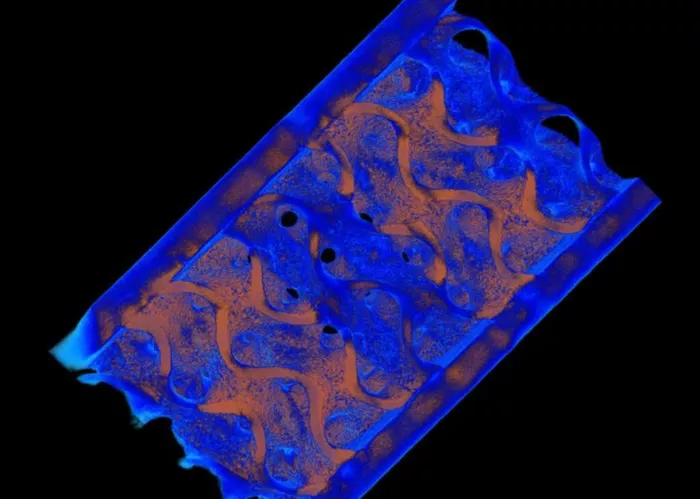A team of researchers from Penn State University has successfully used a new 3D printing method to combine two different metals into a single, complex structure. This achievement, once only possible through welding, was made possible by an advanced additive manufacturing (AM) technique called multi-material laser powder bed fusion. This new approach was made possible by a recently acquired system at the university’s Centre for Innovative Materials Processing Through Direct Digital Deposition (CIMP-3D). The researchers used this method to print a structure made from a blend of low-carbon stainless steel and bronze, which is composed of 90% copper and 10% tin. Their work was published in the journal npj Advanced Manufacturing.
Innovative 3D Printing Process
Jacklyn Griffis, a mechanical engineering doctoral candidate and the lead author of the study, explained that the process involves “selective powder deposition.” This technique allows the team to melt different types of powdered metals in a single layer during the AM process. According to Griffis, Penn State is the first university in the U.S. to accomplish this. The powdered metals used are extremely fine, with particles as small as tens of microns, similar in size to flour. The researchers can precisely deposit the powder with micron-level accuracy and then fuse the metals together using a laser.
The team used a specialized Aerosint selective powder deposition system, which was added to an existing 3D Systems ProX320 AM machine at the SHAPE Lab within CIMP-3D. Griffis noted that a 1 cm-tall metal part takes several hours to print and includes thousands of metal powder layers.
Advancements in Multi-Material Metal Printing
Guha Manogharan, the study’s corresponding author, associate professor of mechanical engineering, and head of the SHAPE Lab, explained that the new technology allows them to 3D print multi-material metal components. In addition to the printing process itself, the researchers have developed methods to monitor the melt pool during printing, enabling them to identify and address potential issues in real-time. They also use digital 3D renderings of the printed parts, created through CT scans, to check for defects like cracks, pores, and other issues at the material interfaces.
In their study, the researchers focused on the build orientation of the metal parts. They experimented with printing the parts upright, flat, and on their sides to understand how the orientation affects the quality of the structure. This analysis included examining factors such as defects, the blending of materials at the interface, and the overall performance of the final part.
Applications and Future Potential
Griffis concluded by highlighting the significance of their findings. The researchers used the complex gyroid shape—a structure used in heat exchangers and biomedical implants—to demonstrate the capabilities of the new manufacturing method. The team noted that only multi-material laser powder bed fusion can create this type of multi-material gyroid shape, marking a significant step forward in the development of advanced 3D printing technologies for complex applications.

